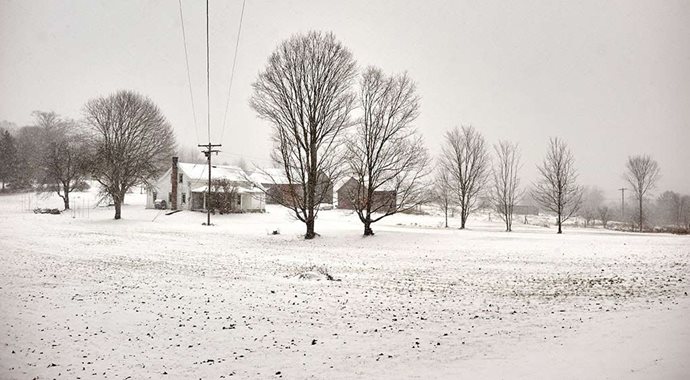Have you ever noticed how tight finances and low temperatures often seem to collide? Come January most people are still dealing with extra holiday spending and then the cost of living goes up with higher energy bills!
While lecturing now about budgeting for Christmas would be a bit tardy, it's not too late to take a look at ways to help residents save money on their power bills. We'll focus on the low-cost ways to tackle that bill now, with some hints about more substantial expense — and subsequent saving — to be considered later.

Heating and Cooling
In our temperate, Pacific Coast neck of the woods, we have fairly moderate temperatures most of the time. During the winter, however, heating costs do increase substantially. The heating bill (or for hotter climates, the cooling bill) typically is, by far, the biggest seasonal piece of the energy pie for a homeowner. Therefore, it's the place to find the most savings with just a few changes.The answer lies in creating a more comfortable microclimate next to your skin. This allows you to turn your heating/cooling equipment to a more efficient, cost-saving setting. It's not just the extra material itself, but also the insulating effect of the trapped air between layers that makes a difference. Layering helps control both sweating and evaporation, which determines comfort for each individual. Heating or cooling the whole house then becomes unnecessary.
Maintaining a constant (lower heat/higher cooling) temp is usually best because objects in the house are also affected by the ambient temperature. This means they too absorb heat or cooling, which requires energy consumption.
When the temperatures are low, consider temporarily closing off a room or even a floor of the house to keep the heat in the primary living areas.
Be proactive by checking for drafts by using a can-of-smoke around windows, doors, light switches, in closets, under the sink cabinets and fireplaces. Found in home improvement stores, just give this product a quick spray and watch where the smoke travels. That will provide quick insight into the areas that should be addressed first.
Fancy draft blockers are nice, but in a pinch even a rolled up towel against the inside bottom of an outside door can keep the cold from seeping in.
While new windows might be ideal, it typically takes up to 40 years to recoup the expenditure in saved heating costs. So, consider re-caulking or weather stripping windows that need it. That can make a difference in how much cold air comes in.
Closing blinds or heavy curtains — especially at night — helps retain the heat inside. Make it a habit to close them as soon as the sun goes down for the day, if possible. (But capture the heat of the sun during the day by having them wide open!)
When it comes to fireplaces, you'd be surprised how many people leave theirs open. If the fireplace isn't being used, close the draft — and perhaps leave a note as a reminder. Keeping an unused fireplace draft open is like sending money up the chimney!
Another place that can be forgotten is the hatch to the attic. Make sure it is tightly closed. It's another candidate for the can-of-smoke test.
Lastly, even though your house's foundation vents are there for a reason — to keep your house breathing in and out fresh air and removing moisture — when the temperature remains below freezing, we suggest temporarily closing them. Just make sure to open them up again when the weather stays above 35-40 degrees, otherwise you could begin to have moisture issues under and inside your home.
Consider New Thermostat
Learn how to properly use your thermostat to save money. A slow, steady increase and decrease in temperatures is more effective and cheaper than severe spikes during the day. Consider purchasing a programmable thermostat. If you do have one, make sure you are using it to its greatest advantage.If you are gone for a day or two and freezing pipes aren't a concern, remember to put your thermostat on "vacation," so you aren't keeping an empty house toasty warm.
This may not be the time for the investment, but do look into a very energy-stingy heat pump, ductless or ducted when it is equipment change-out time. While there are parts of the country where they are not well suited in winter without an alternative heat source boost, they are great in the summer for air conditioning everywhere.

